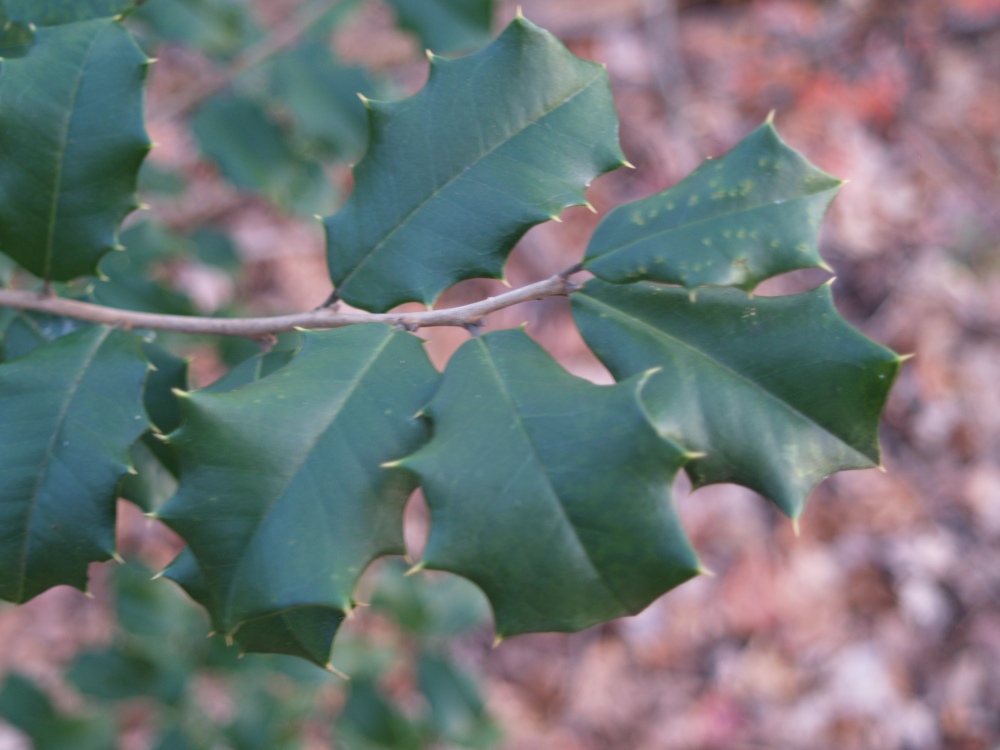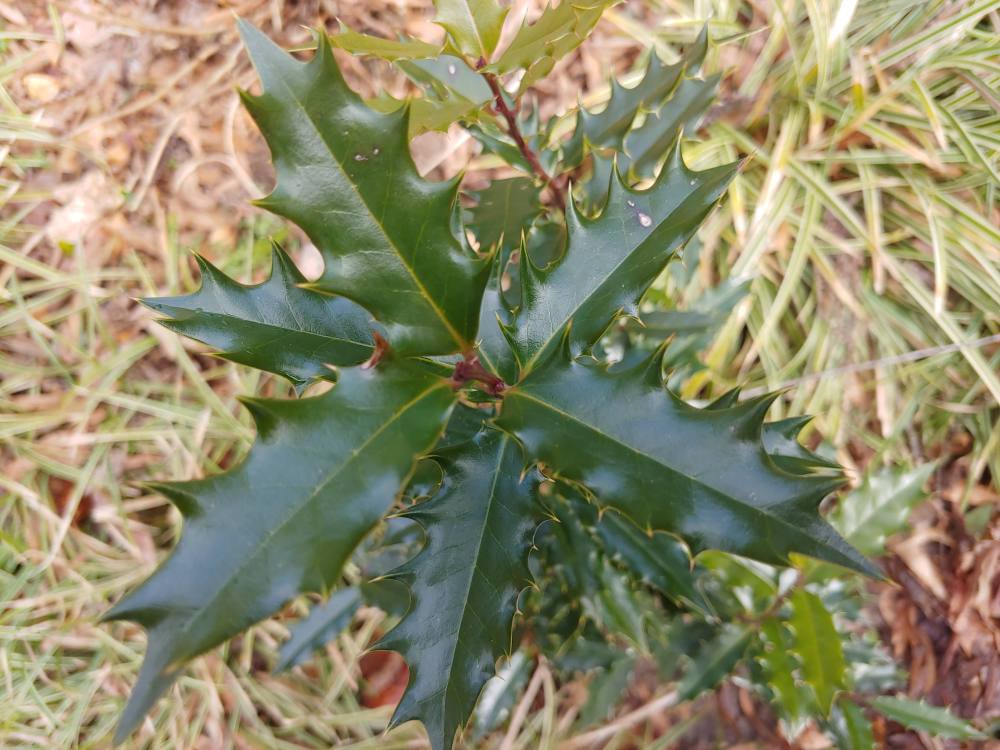Seedlings from various plants are not unusual in the garden. Hellebores and Japanese maples seed by the hundreds, and occasionally seedlings are found in densely planted areas already grown to a foot or two in height before they are seen. Then, the Japanese maple (or whatever) is weeded out and discarded, or occasionally, potted or transplanted to a space with more room for growing.
Today, a seedling holly was found growing between an Umbrella pine and a grouping of deutzias. This seedling was taller than most, going through the past few years unseen in this densely planted spot. Besides its size, I became curious due to the elongation of the glossy leaves and the unusually prominent spines.
Seedlings of the native American holly (Ilex opaca, below) are not unusual along the wooded margins of the garden. With the genetic variability of seedlings, no two appear identical, and as many are left to grow as will possibly fit. This seedling, I suspect, is not a native American holly, that are typically lighter green and not as glossy. There are a dozen other hollies in the garden, most variants from the common Nellie Stevens, so I figure the new holly is some combination of Chinese hollies (Ilex cornuta).

In any case, the seedling was dug out and transplanted where there is more space. Certainly, this will not be any better than other hollies, but there is some appeal to something new, and there is a particular curiosity when the new plant is homegrown.

Very cool!
Had to chuckle at this. Same experience here in our garden/woodland. I’ve tried to transplant a few of these Holly sprouts, but they haven’t survived. Will keep trying, though, as the plantings are “free.”
It looks to me to be the same English holly, Ilex aquifolium, that so often seeds here, although it does look like it could have hybridized with another, or could be a seedling from a cultivar that I am unfamiliar with. It happens to be one of my favorite evergreen shrubs, but bothers me when it tries to move into the forest.